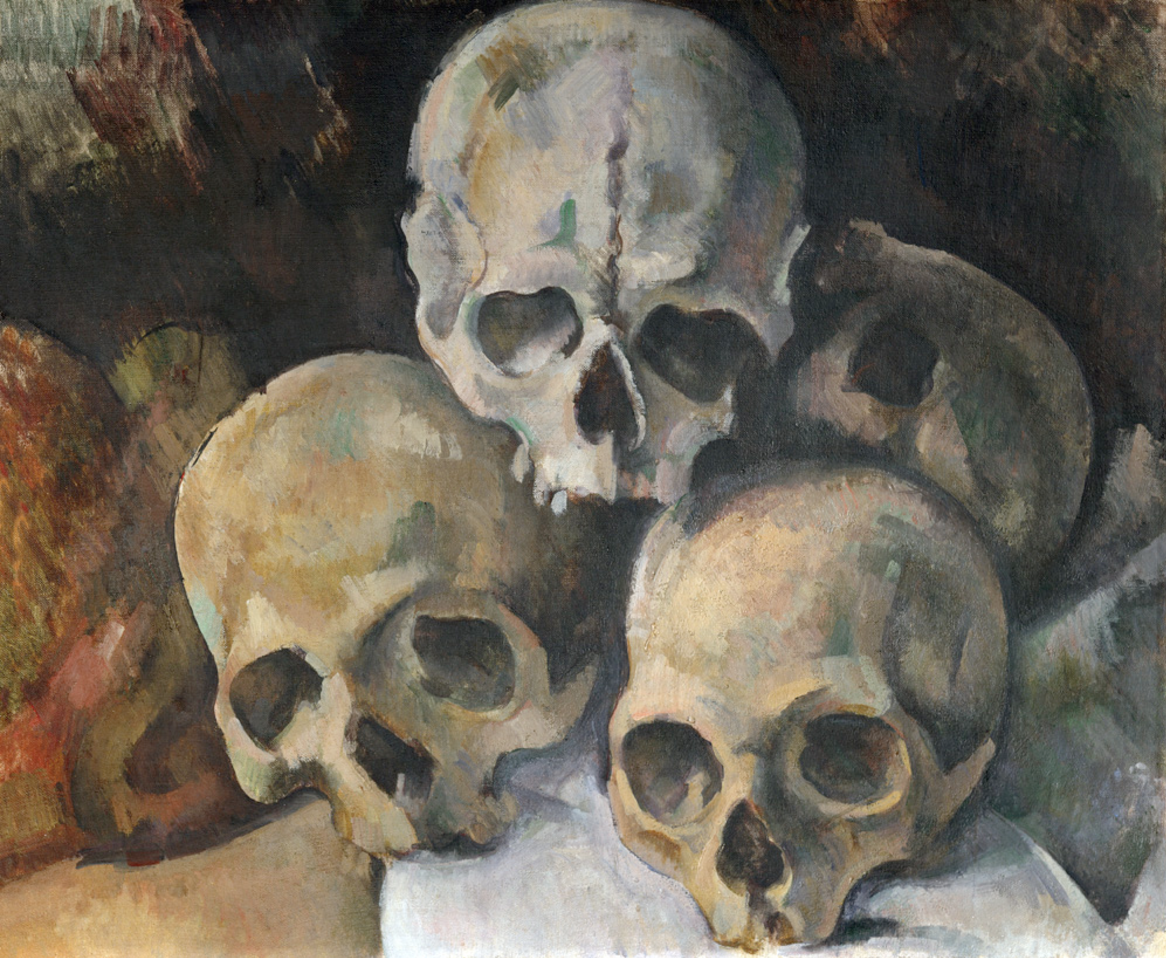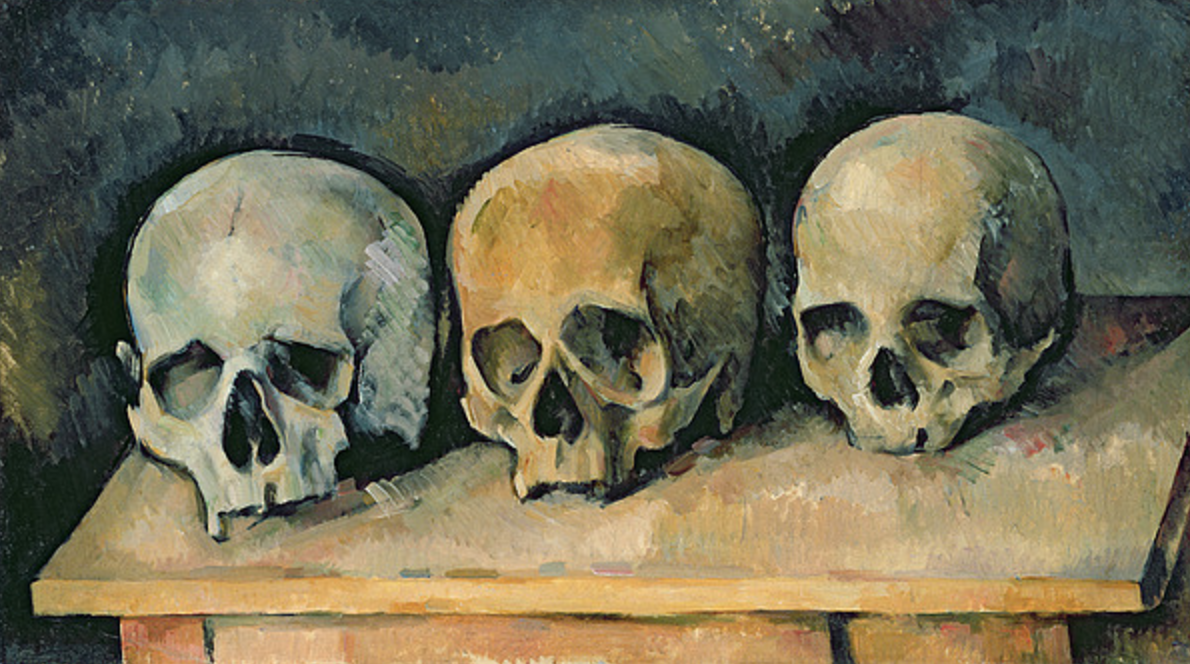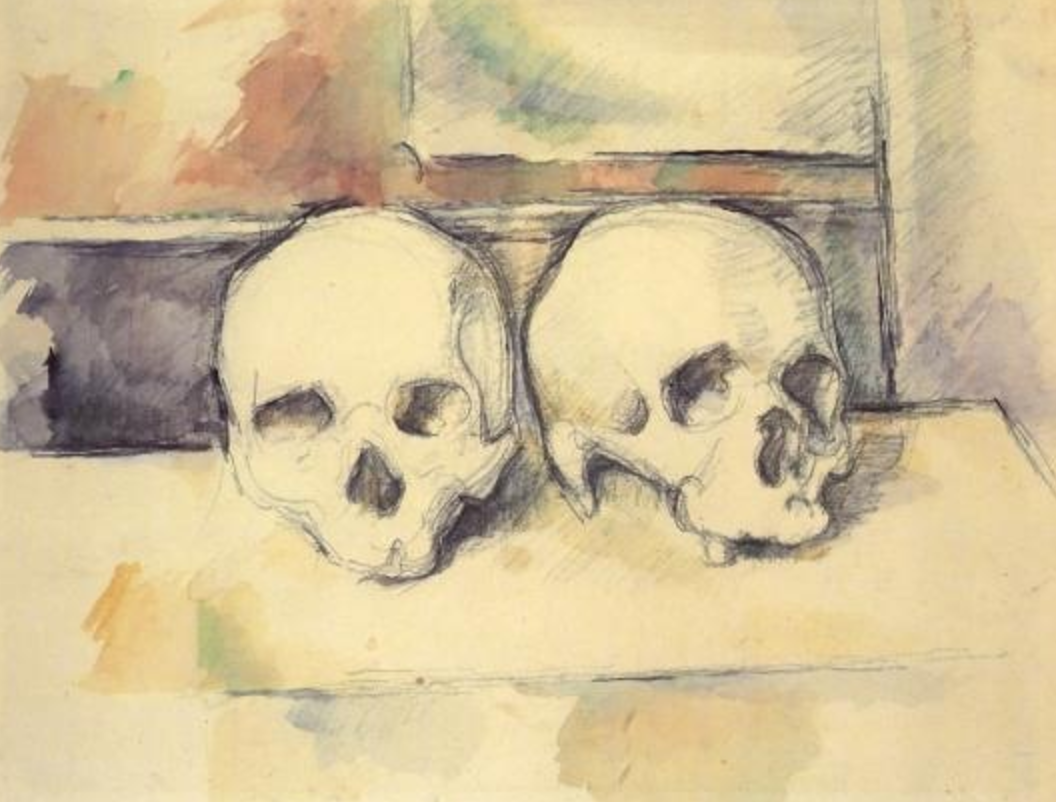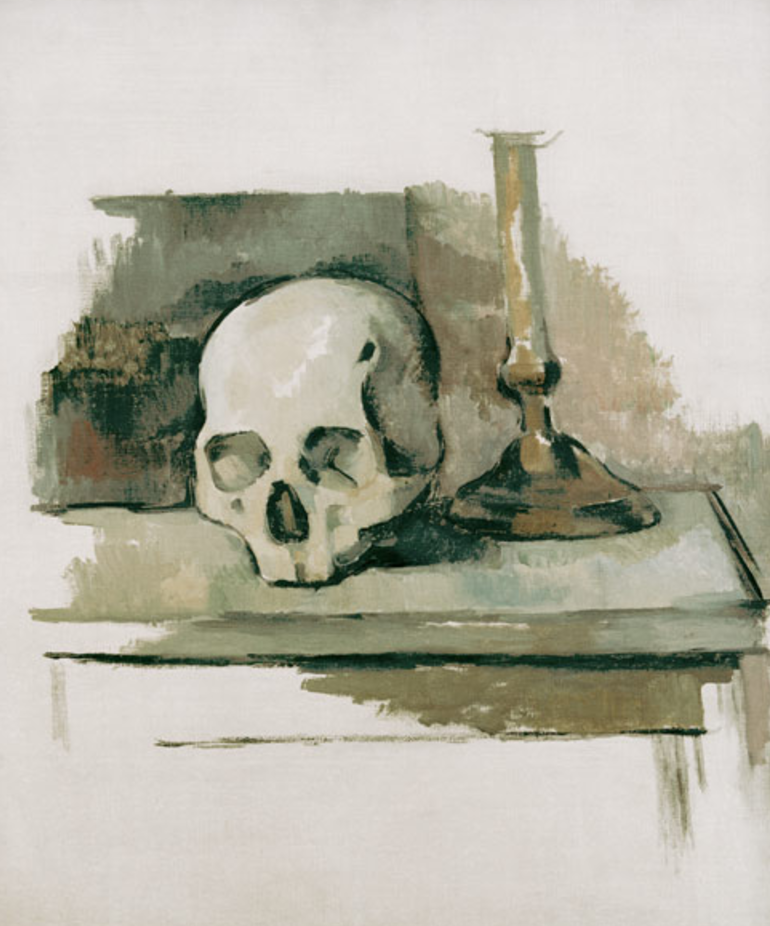Memento mori (Latin: "remember that you have to die") is the medieval Latin Christian theory and practice of reflection on mortality, especially as a means of considering the vanity of earthly life and the transient nature of all earthly goods and pursuits. In art, the memento mori is used to remind the viewer of their mortality and of the shortness and fragility of human life.
Below, a handful of Paul Cézanne's gorgeous paintings containing the classic memento mori- the skull.
Unsurprisingly, the objects and colors of Cézanne's studio reflect his canvases.
An image from Cézanne’s studio in Aix-en-Provence.
The study of gray is not something we often think about in the works of most modern artists. Perhaps the pointillists were the last to study the ways in which color aggregated to form grays in the shadows beneath tables, under sun bonnets, in the dappled light of trellises or on city pavements. As I walked around Cézanne’s studio, I noticed that light bouncing up from the warm wooden flooring tinted the gray nearest it with rose and that under the shelves the light caromed back and forth between wall and shelf, carrying the subtle tones of whatever was nearby. These extremely delicate gradations were everywhere visible to me in the overall grayness and made me realize that we too often simply accept a generalized idea about the colors in our visual surround.
-Excerpted from Cézanne’s Objects by Joel Meyerowitz. Copyright © 2017. Reprinted with the permission of Damiani. All rights reserved.
For more information on Paul Cézanne, Artsy's page provides visitors with Cézanne's bio, over 170 of his works, exclusive articles, and up-to-date Cézanne exhibition listings.






